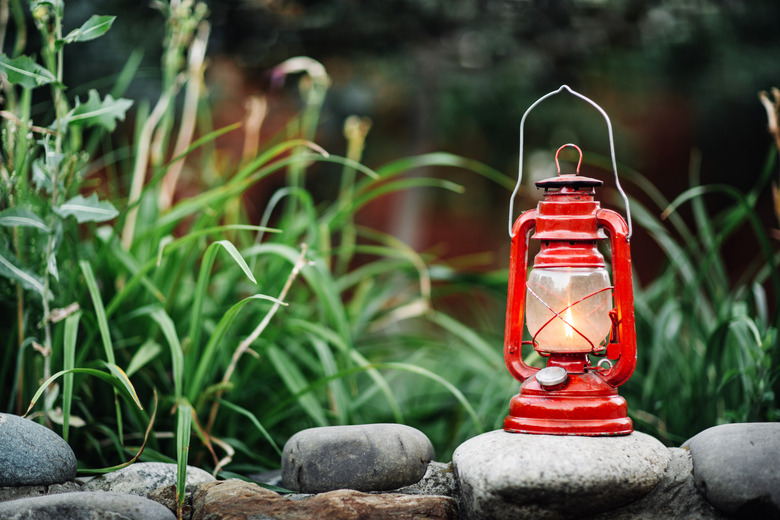How Flammable Is Kerosene?
We may receive a commission on purchases made from links.
Kerosene isn't a commonly used fuel for most people today, but if you're holding on to old-fashioned kerosene lamps just in case of a power outage or if you use this fuel to heat your home, it's essential to understand the safety risks associated with kerosene. A tiny spark is enough to ignite kerosene's vapors and get this fuel burning. Like all flammable or combustible liquids, you can't take any chances when handling or disposing of kerosene.
Tip
While it has a higher flash point than many flammable liquids, kerosene is highly combustible and can ignite if it's heated to 100 degrees Fahrenheit or higher.
Measuring Flammability of a Liquid
Measuring Flammability of a Liquid
To understand how flammable kerosene is in comparison to other liquids, it's useful to understand how a liquid's flammability is measured and expressed.
As a flammable liquid heats up, vapor forms above its surface and combines with air. It's this vapor that burns when an ignition source (like a lit cigarette) is introduced rather than the fuel itself. Each flammable liquid has a unique flash point. This is the lowest temperature at which enough of the vapor will form above the liquid's surface to be ignitable. So, a liquid with a flash point of 200 degrees shouldn't ignite when it's heated to 150 degrees, for example.
Flash point is used to distinguish between combustible and flammable liquids. Flammable liquids have a lower flash point (below 100 degrees) and may ignite even at room temperature. Acetone and ethanol are examples; they have a flash point of just 73 degrees. Combustible liquids require exposure to heat in excess of 100 degrees in order to ignite.
Flammability of Kerosene
Flammability of Kerosene
Because many people don't realize the technical difference between flammability and combustibility, it's a common mistake to call kerosene a flammable liquid. In fact, its flash point technically makes it a combustible liquid. Kerosene has a flash point of anywhere from 101 to 162 degrees. This means that kerosene could become hot enough to ignite if it's stored in an open container in a poorly ventilated room on a very hot day.
Safely Handling Kerosene
Safely Handling Kerosene
As with all flammable or combustible liquids, safely handling kerosene is paramount. Kerosene poisoning can occur when a person or animal ingests kerosene or breathes in kerosene vapors, to say nothing of the risks associated with accidentally igniting kerosene. These risks are why you may want to stop using kerosene. Clean your antique kerosene lamps and display them as decorations and then stock up on LED camping lamps in case of future power outages.
Keep kerosene stored in its original container. If you have to refill a kerosene lamp or heater, do this outdoors. Always wear safety gloves and protective eyewear before handling kerosene. Once a kerosene heater or lamp is lit, don't try to move it and don't leave it unsupervised. Make sure the room has some ventilation to prevent dangerous levels of carbon monoxide from building up.
Like other kinds of fuel, kerosene should never be poured down a drain or thrown into a garbage can. If you need to dispose of kerosene, check your municipality's guidelines for hazardous waste disposal. You'll probably be required to bring the liquid to a special hazardous waste collection site. The disposal process is generally the same no matter what type of kerosene you have.
